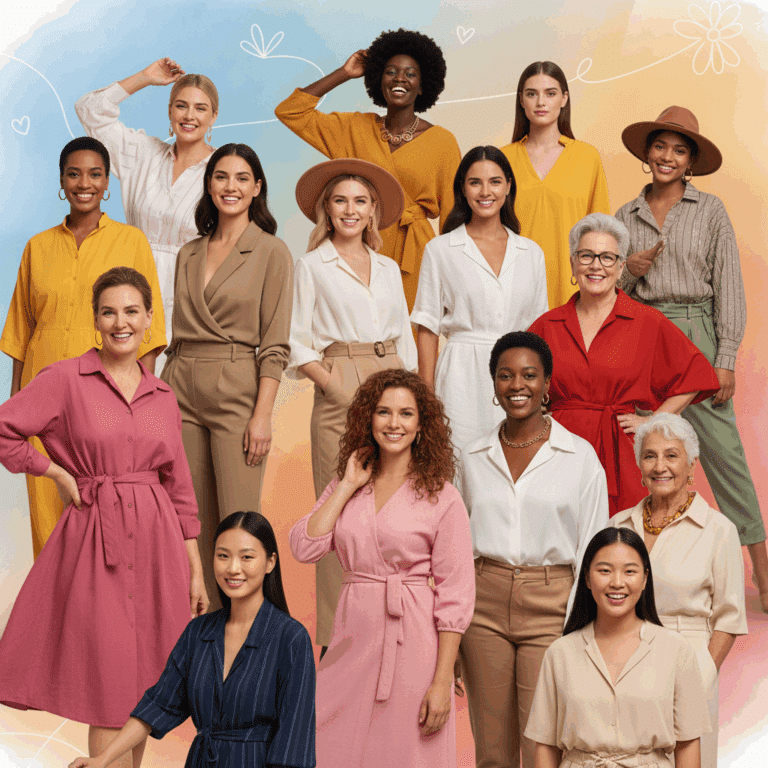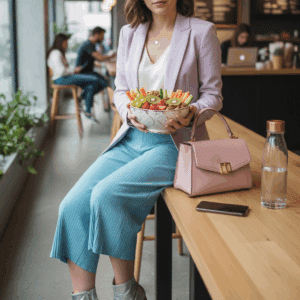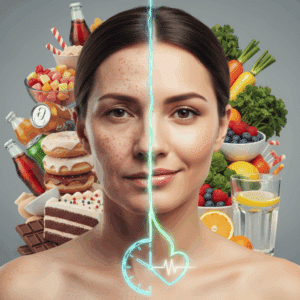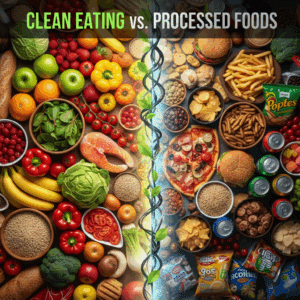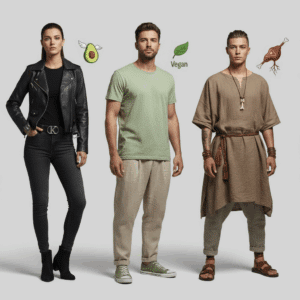Emergence of Body-Positive Fashion Brands
The rise of body-positive fashion brands marks a significant shift in celebrating bodies of all sizes, ages, and shapes. These brands embrace inclusivity, pushing back against traditional norms.
By expanding size ranges and diversifying model representation, they foster a new perspective on beauty and enhance representation, influencing fashion industry standards deeply.
Celebrating Diversity in Sizes and Shapes
Body-positive brands celebrate a wide spectrum of sizes and shapes, recognizing beauty in all its forms. This approach opens the door to greater self-acceptance among consumers.
They offer inclusive product lines designed for varied body types, ensuring customers feel represented and valued by the fashion community.
These brands cultivate authenticity by showcasing real bodies, promoting confidence and self-love through their campaigns and collections.
Challenging Traditional Beauty Standards
By rejecting narrow beauty ideals, body-positive brands challenge long-standing fashion industry norms that favored limited body types. This shift fosters a more inclusive environment.
Campaigns featuring diverse models break stereotypes and redefine what it means to be beautiful, encouraging societal acceptance and mental well-being.
This challenge to traditional standards strengthens brand identity and connects emotionally with audiences by validating diverse experiences and stories.
Impact on Fashion Industry Practices
The rise of body-positive fashion has led to concrete changes in how the industry approaches sizing and model diversity. Inclusive practices now shape brand strategies.
Brands expanding size ranges and representing varied body types have redefined market expectations, creating products that resonate emotionally with a wider audience.
Inclusive Sizing and Model Representation
The adoption of inclusive sizing challenges the typical fashion standard by providing options that fit diverse body types, promoting accessibility for all consumers.
Model representation now features individuals of different ages, ethnicities, and sizes, making campaigns more authentic and relatable for the public.
This shift has led to iconic moments, such as major brands showcasing non-traditional models on runways, reinforcing the message of inclusivity throughout the industry.
Emotional Connection and Authentic Branding
Body-positive brands create strong emotional ties with customers by embracing authenticity and celebrating real-life bodies, fostering loyalty and trust.
Authentic branding elevates engagement by telling genuine stories that resonate deeply, encouraging consumers to view fashion as a form of personal expression and confidence.
Campaigns that highlight diversity help brands stand out in a crowded market, generating media attention and boosting sales through emotional relevance.
Influence on Fitness and Sportswear Segments
The fitness and sportswear industries have embraced body positivity by promoting inclusiveness in their campaigns and product lines, appealing to diverse users.
Initiatives like empowering messages and collaborations with diverse influencers emphasize acceptance and self-love alongside physical activity and wellness.
This trend expands the definition of athleticism, encouraging consumers of all sizes and shapes to participate in fitness without feeling excluded or judged.
Consumer Expectations and Market Responses
Consumers increasingly demand genuine inclusion and diversity from fashion brands. They expect authenticity beyond marketing tactics, seeking true representation.
The market has responded by expanding size ranges, age groups, and ethnic diversity, reflecting a deeper commitment to embracing all body types.
Demand for Genuine Inclusion and Diversity
Today’s consumers reject superficial diversity and favor brands showing authentic commitment to inclusion through diverse products and campaigns.
This demand pushes companies to rethink strategies, ensuring all customers feel seen, valued, and represented in fashion offerings and advertising.
Brands embracing this shift foster trust and loyalty, as consumers connect with messages that celebrate real bodies in honest and meaningful ways.
Role of Generation Z in Shaping Trends
Generation Z plays a pivotal role in driving body positivity trends, influencing brands to prioritize diversity and social responsibility.
This generation values transparency and inclusivity, actively supporting brands that challenge outdated beauty norms and promote self-acceptance.
Their purchasing power and vocal advocacy compel fashion companies to innovate products and communications that align with evolving cultural values.
Challenges and Future Trends in Body-Positive Fashion
The body-positive fashion movement faces resistance as market trends pull towards narrow beauty ideals fueled by emerging technologies and societal pressures.
Despite these tensions, brands continue to seek a balance between authenticity and commercial appeal, aiming to stay relevant within a changing industry landscape.
Resistance and Market Shifts Toward Narrow Beauty Ideals
Increasing use of AI and weight-loss drugs encourages a return to slim-centric beauty standards, creating pushback against the broad acceptance promoted by body positivity.
This shift risks marginalizing diverse bodies once championed by inclusive brands, as some consumers and companies lean toward traditional, narrow ideals.
Nevertheless, subtle efforts by certain brands persist, quietly promoting diversity while navigating pressures from changing market demands and technological influences.
Balancing Authenticity with Commercial Appeal
Brands face the challenge of maintaining genuine inclusivity without compromising profitability in a highly competitive fashion market.
This balance requires carefully crafted campaigns that respect diverse identities while appealing to widespread consumer tastes and expectations.
Strategic partnerships with influencers who embody authenticity help brands connect meaningfully with audiences, reinforcing trust and emotional loyalty.
Looking Ahead: Trends to Watch
Future trends indicate a blending of technology and inclusivity, where AI could be harnessed to create customized, body-positive garments for diverse consumers.
As younger generations demand accountability, brands embracing transparency and social responsibility may define success in the evolving body-positive fashion space.
